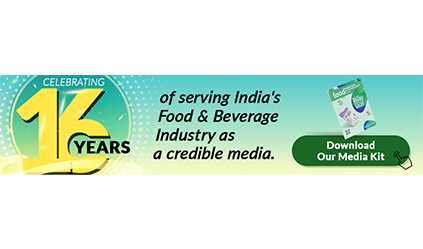Method of Food processing is a significant industry that ensures people have safe, healthy, and tasty foods throughout the year. In India, where agriculture is part of the economy, there is a need to process and preserve foods to meet the growing population and reduce food wastage. However, the way processed foods are prepared and at what stage they are subjected to processing can either add to or reduce the nutritional value and enhance or reduce the taste of the food. This blog will discuss how various food processing techniques affect food’s nutritional value and taste and the importance of preserving food. By understanding these methods, consumers can make appropriate decisions regarding the foods they consume and the effects on their health.
Common Methods of Food Processing
Food processing is a step undertaken to change the state of the food in some way to make it more suitable for consumption in terms of safety or storage. Food processing is well-accepted in India, and traditional and advanced technological practices are used to prepare food products. Here are some of the most common methods:
-
Thermal Processing
Thermal processing is one of the oldest and most effective techniques of food processing, and it is commonly used worldwide. It refers to the process of raising the temperature of food to certain high levels that can eradicate infectious organisms and enhance the preservation of food items. Two examples of such processing methods include pasteurization and sterilization.
- Pasteurization involves warming liquid foods such as milk or fruit juices to a certain temperature (60-90°C) for a few minutes. This neutralizes the pathogenic bacteria and preserves most of the vitamins and taste.
- The sterilization technique, however, uses heat above one hundred degrees centigrade for a longer time. It is highly efficient in eliminating microorganisms but, unfortunately, causes nutrient degradation, particularly of heat-sensitive nutrients such as Vitamin C and B Vitamins.
Impact on Nutrition: Pasteurization is usually considered less destructive to nutrient content than sterilization. However, both processes may reduce the levels of a fair number of vitamins and antioxidants, making food safe from pathogens.
Impact on Flavor: Heating can affect the taste, and we have evidence that thermal processing can alter the flavor of chocolate. Pasteurization has little impact, but sterilization changes the taste; it becomes like cooked food, particularly on fruits and dairy products.
-
Freezing
Another widely used method of food processing in Indian households is freezing. This method reduces the food temperature to below zero to reduce the enzyme and microbial activity.
Impact on Nutrition: Freezing usually retains the nutrients in foods much better than most other food processing methods. For example, freshly frozen fruits and vegetables contain more vitamins and minerals than fresh ones that are not consumed immediately after purchase.
Impact on Flavor: Freezing is also more effective in preserving the original taste of foods than heat treatments. Nonetheless, improper freezing or prolonged storage alters the textural properties influencing the perceived flavor.
-
Fermentation
Fermentation has been part of Indian cuisine for decades, such as in yogurt, dosa batter, and pickles. Bacteria or yeast work on sugars to ferment them into acids, alcohol, or gases.
Impact on Nutrition: Fermentation improves the nutritional value of foods. This means increased availability of nutrients such as B vitamins and probiotics, which are beneficial in enhancing gut health. Fermentation also reduces the glycemic index of the foods, thus a plus for diabetics who consume this food type.
Impact on Flavor: Fermentation processes improve food taste, creating tangy or sour flavors. The process is crucial in creating different flavors for different foods, such as curd, kimchi, and sourdough bread.
-
Drying
Drying is the oldest method of food processing and preservation, and it is still used today. It helps prevent the growth of bacteria in food since water is a medium for most bacteria, and it also helps preserve food by reducing the amount of water content.
Impact on Nutrition: Drying can reduce nutrient content, especially water-soluble nutrients such as vitamin C and some vitamins in general, but it also tends to intensify nutrient content like fiber and antioxidants.
Impact on Flavor: Dried food is often favored for its stronger and more potent taste than freshly prepared food. For example, dried tomatoes or mangoes are sweeter than when fresh in the market.
-
Canning
Canning is a method of food preservation in which food items are packed in a tightly sealed container, usually subjected to heat, that can eliminate unhealthy bacteria.
Impact on Nutrition: Like thermal processing, the canning method also involves the loss of heat-sensitive nutrients such as vitamins. Fats, minerals, and proteins do not change their composition much during incomplete characterization. Canned vegetables such as beans and fish have a large part of their nutrients preserved, while fruits, however, sometimes might lose some vitamins in the canning process.
Impact on Flavor: Canned foods differ in taste from fresh foods. The heating process may affect the product’s taste, but the enclosing will maintain the general taste of the product.
-
Pickling
A process of preservation and preparation of food in which it is soaked in vinegar solution or brine. It is widely used in India to store fruits, vegetables, and fish, amongst other perishable goods.
Impact on Nutrition: Soaking reduces the digestibility of grains, nuts, and seeds and increases the goitrogencies that impair the absorption of iron and calcium supplements. However, it may decrease the water-soluble Vitamin C, for instance, due to the acidic environment.
Impact on Flavor: Pickles impart a sour and tangy taste to food, so most prefer pickled meals. Pickles are common in Indian food, as their flavors are sharp and bright.
Benefits of Food Preservation in India
The various functions of food preservation extend beyond the mere prolongation of food shelf life. In a country like India, where the agricultural seasons are very few and food is squandered, the most important thing to do is use many food processing techniques.
-
Reduction of Food Wastage
Food waste is a huge problem in India, and millions of tons of food are wasted annually. According to the United Nations, approximately 40% of food produced in India is wasted. Preventing food spoilage by proper processing and preservation minimizes this wastage, so more food gets to the market and consumers.
-
Availability of Seasonal Foods
Methods like freezing, drying, and canning help ensure we can take seasonal foods. For example, we can store fresh peas from the winter and use them in the summer when raw peas are out of season.
-
Enhanced Food Security
Food processing and preservation ensure a continuous food chain. Procedures such as canning and freezing also help food manufacturers maintain a food supply since some foods can only be produced in particular seasons or periods and thus could lack market during other periods.
-
Improved Nutritional Quality
While some food processing methods can reduce nutrient content, others, such as fermentation and drying, may even improve the nutritional value of food. Fermented foods contain probiotics, while dried foods are sources of concentrated nutrients such as fiber and antioxidants.
Conclusion
Choosing the right food processing method can make a lot of difference in terms of the nutritional value of food and the taste. Every method has its advantages and disadvantages when it comes to heating and cooling, fermentation, pickling, and other processes that affect the nutritional value and taste of the food. In the case of India, especially when dealing with the problem of food wastage and aiming to enhance food security, it is crucial to understand the potential advantages of a specific kind of food processing. Thus, by choosing proper methods, consumers and food manufacturers can provide the public with healthy, tasty, and long shelf-life food.



